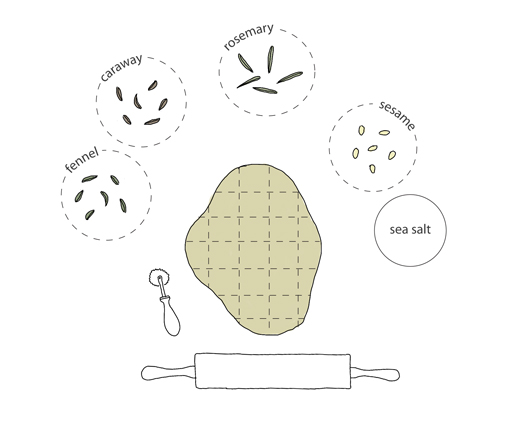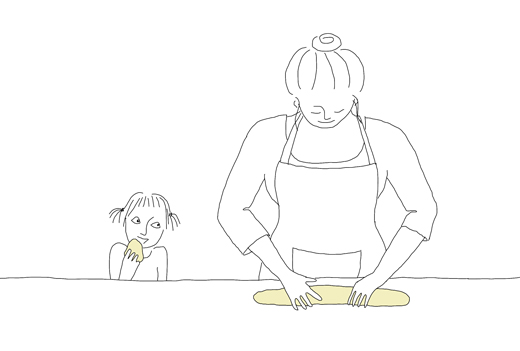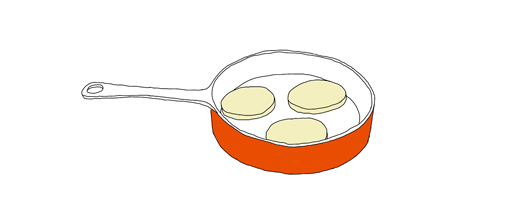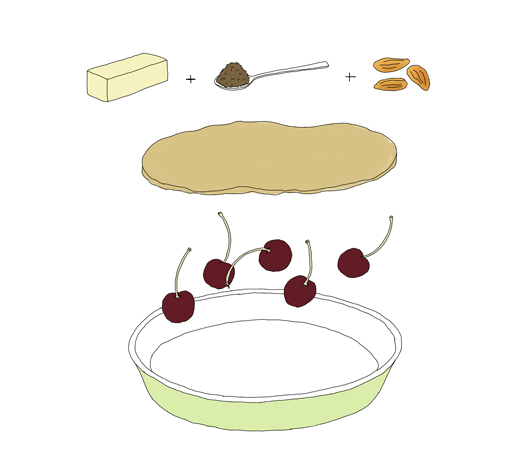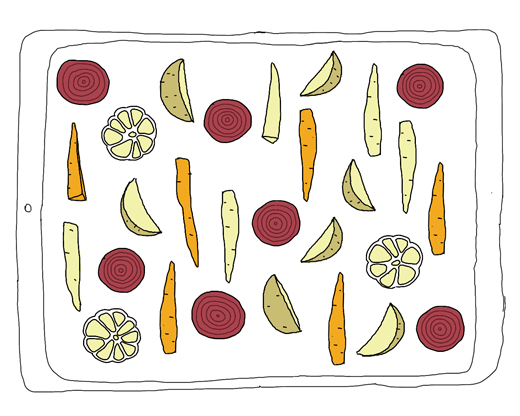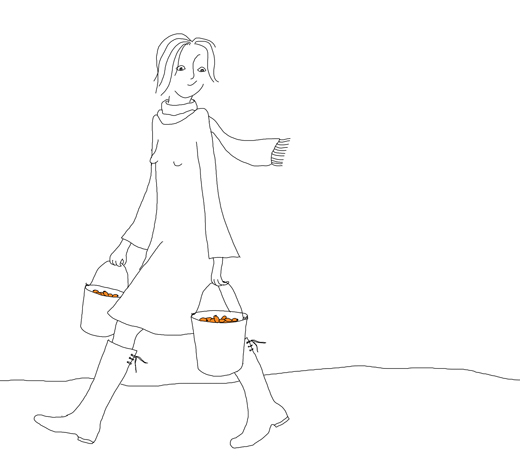
After being tired of not finding great Knäckebröd, Scandinavian Crisp Bread in the stores around my neighborhood in East Village, I started to make my own. Traditionally they are made as round wafers with a hole in the middle so you could store them hanging on a stick in the roof. They are often made with rye flour and rolled out with a special rolling pin with knobs. However I usually don’t use this tool and I like my home made knäckebröd as small crackers flavored with either or a combination of some: caraway seeds, fennel seeds, sesame and rosemary. My recipe is based on Alice Brax knäckebröd recipe.
first
25 grams fresh yeast
1 tablespoon honey
200 ml (almost 1 cup) kefir or yogurt
400 ml (1 2/3 cup) water
600 ml (2 ½ cup) rye flour
about 600 ml (2 ½ cup) regular flour
and later
100-200 ml ( ½ – 1 cup) regular flour
caraway seeds, toasted and crushed
fennel seeds, toasted and crushed
sesame seeds, toasted
dried Rosemary, crushed
flaky sea salt
Warm the yogurt with the water to 37°C (100°F). Dissolve the yeast in some of the warm yogurt mixture. Add the rest of the liquid and blend in honey and rye and regular flour. The dough will be quite sticky. Cover the bowl and keep at room temperature in a non-drafty area overnight or for at least 6 hours.
When the dough is ready, work in just enough of regular flour. Knead the dough on a floured counter top until the dough is smooth. Preheat the oven to 225°C (435°F).
Divide the dough into 15-20 equal parts. With your fingers sprinkle either caraway, fennel, sesame or rosemary together with flaky sea salt over each part and roll them into balls. Use a rolling pin and some regular flour to roll out every ball of dough very thinly. Using a cookie cutter or a sharp knife, cut into approximately 5 cm (2 inch) shapes. Place as many as you can fit on a greased baking tin. Bake the crackers immediately for about 8-10 minutes in the middle of the oven. depending on your oven you may have to turn them around to get nice all around color. When finished let the breads cool on an oven rack or a clean table. Keep the crackers in sealed containers.
This recipe was first published at Honest Cooking, 21 September 2011
Also check out my Wild Fennel Knäckebröd I baked in Sicily, with sourdough and Perciasacchi semola.
